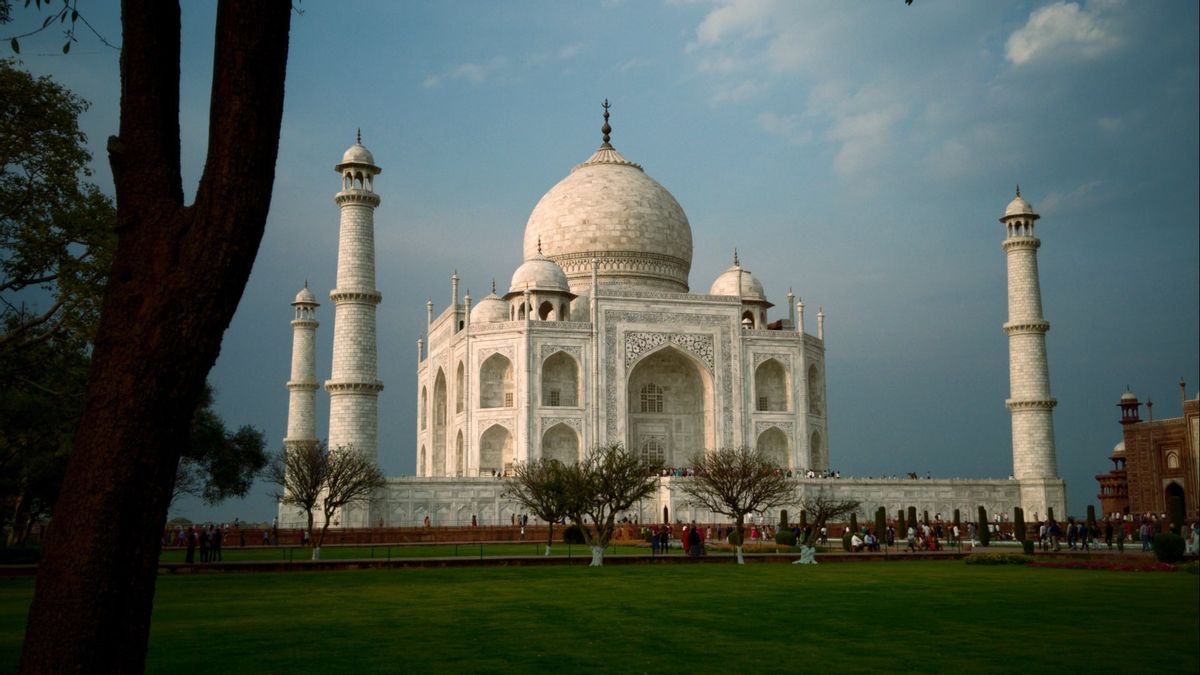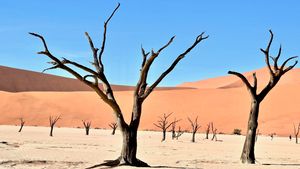JAKARTA - On June 17, 1631, the wife of Mughal Emperor Shah Jahan, Mumtaz Mahal died while giving birth to their 14th child in Burhanpur, Madhya Pradesh. To show his love for his late wife, Shah Jahan built a mausoleum that we know today as the Taj Mahal.
Historical records quoted from Maps of India describe Mumtaz Mahal as a woman who did not cultivate political ambitions. This was in stark contrast to her aunt and mother-in-law, Nur Jehan, who controlled the previous government firmly.
Mumtaz Mahal is known as a woman who is so gentle and loving. He often helps the poor and helpless. Mumtaz Mahal asked her husband, Shah Jahan to assist her poor people.
Mumtaz Mahal also loved architecture and spent a lot of time tending the riverside gardens in Agra. She gave birth to 14 children, including popular historical figures, such as Dara Shikoh, Shah Shuja, Roshanara Begum, Jahanara Begum, and Aurangzeb.

Shah Jahan looked devastated at the death of his beloved wife. Nothing can comfort him. Shah Jahan mourned by self-isolation for a year. And when he came back, all his hair was white and his face was marred with sorrow.
Shah Jahan's beloved eldest daughter, Jahanara Begum helps her father through this difficult phase of grief. She gradually brought Shah Jahan out of the mourning period. After that, Jahanara Begum took her mother's place in the palace.
Shah Jahan built the Taj Mahal in Agra, where he ascended the throne in 1628. First conquered by Muslim invaders in the 11th century, the city was transformed into a thriving trading area during Shah Jahan's reign.
Located on the banks of the Yamuna River, water access is easier, and Agra City has earned a reputation as a "riverside park city". The gardens are carefully designed, lush with flowering shrubs and fruit trees in the 16th century.
Construction of the Taj Mahal
The construction of the Taj Mahal began in 1632 AD and was completed in 1648 AD. The Taj Mahal was built with white marble and became the architectural gem of the Mughal Sultanate in India as well as being Shah Jahan's vision of Mumtaz's home in heaven.
The architecture of the Taj Mahal combines elements of Islamic, Indian, Persian, Ottoman, and Turkish art styles. The main architect of the Taj Mahal is Ahmed Shah Lahauri. Thousands of craftsmen were employed during the construction of this monument.
Building materials are sourced from all over India and Asia. More than a thousand elephants were used to carry building materials. The white marble used to build the Taj Mahal is sourced from Makrana in Rajasthan.

Other materials include turquoise from Tibet, lapis lazuli from Afghanistan, jade and crystal from China, and sapphire from Sri Lanka and Arabia. The white marble of the Taj Mahal contrasts with the green of the surrounding gardens and the blue of the sky.
This combination gives a beautiful hue to the monument. According to widespread belief, the Taj Mahal was built in such a way that the white marble would reflect the sky. Hence the monument changes color during the day.
In the early hours of the morning, the Taj Mahal looks pink. It turns milky white by day, gold shimmers at sunset, and silver shimmers in the moonlight.
Threatened UNESCO heritage site
The Taj Mahal is one of the best tourist attractions in the world. The Taj Mahal hosts millions of visitors per year. The Taj Mahal was designated a UNESCO World Heritage Site in 1983 and is currently overseen by the Archaeological Survey of India.
Supervision is carried out due to heavy visitor traffic. This is one of the many factors that threaten the integrity of the site. Citing Smart History, one of the biggest risk factors for the Taj Mahal is air pollution.
Air pollution changes the color of the exterior. Even according to some experts, air pollution also causes acid rain which damages marble. Air pollution is caused by many factors, including industry, vehicle emissions, and the burning of household waste.

The Indian government designated an area called the Taj Trapezoid Zone of 10,400 square kilometers. The area includes the Taj Mahal as well as the Agra Fort and the historic Mughal settlement of Fatehpur Sikri.
Oil refineries and the coal-burning industry were ordered to regulate their emissions or switch to natural gas within this zone. Most have complied. There is also a ban on car traffic near the Taj Mahal.
Air quality monitor installed. The Archaeological Survey of India also proposed tourist restrictions and increased fees to limit the impact of visitors. Another risk for the Taj Mahal is the drying up of the Yamuna River.
The river runs along the back of the complex. The river has been partially dammed upstream of the Taj Mahal to supplement its water supply. Some argue that land changes occur because of lower water levels. And it could threaten the structure of the Taj Mahal.
*Read other information about WORLD HISTORY or read other interesting articles from Putri Ainur Islam.
TODAY'S HISTORY More
SEE ALSO:
The English, Chinese, Japanese, Arabic, and French versions are automatically generated by the AI. So there may still be inaccuracies in translating, please always see Indonesian as our main language. (system supported by DigitalSiber.id)


















